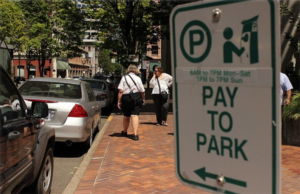In November 2022, the Oregon Department of Land Conservation and Development issued parking reform for cities with populations above 5,000 to address the financial and environmental burdens of parking mandates. In addition to reforms that all included cities must make, the cities with populations over 100,000 must choose between eliminating parking mandates or adopting pricing for five percent of all on-street parking spaces by 2023, and ten percent of all on-street parking spaces by 2025. Should a city choose this route to comply with these reforms, it needs to know how many on-street parking spaces there are in total. Like most cities, the City of Eugene has varied GIS data but lacks accurate and comprehensive GIS data tracking on-street parking; therefore, our team was tasked with developing a methodology to inventory the on-street parking in Eugene that could be applied to other Oregon cities with populations greater than 100,000. The main objective of this project is to develop a repeatable methodology for identifying on-street parking spaces and estimating their quantity. Our methods leverage widely available GIS data and collection tools to determine the presence of on-street parking based on the characteristics of streets that we sampled and analyzed. To ensure repeatability, we include recommendations based on our research into the street design standards and databases of Eugene and other Oregon cities.
Site Search:
Menu

Let’s Start Counting! A Methodology to County On-Street Parking Spaces in Oregon Cities
Metrics
- University University of Oregon
- Sustainable Development Goals 03 Good Health and Well-Being, 07 Affordable and Clean Energy, 09 Industry Innovation and Infrastructure, 10 Reduced Inequalities, 11 Sustainable Cities and Communities, 12 Responsible Consumption and Production, 13 Climate Action, 15 Life on Land
- University Department Public Policy and Administration
- Lead Local Gov / Community Partner Org Name Oregon Department of Land Conservation and Development